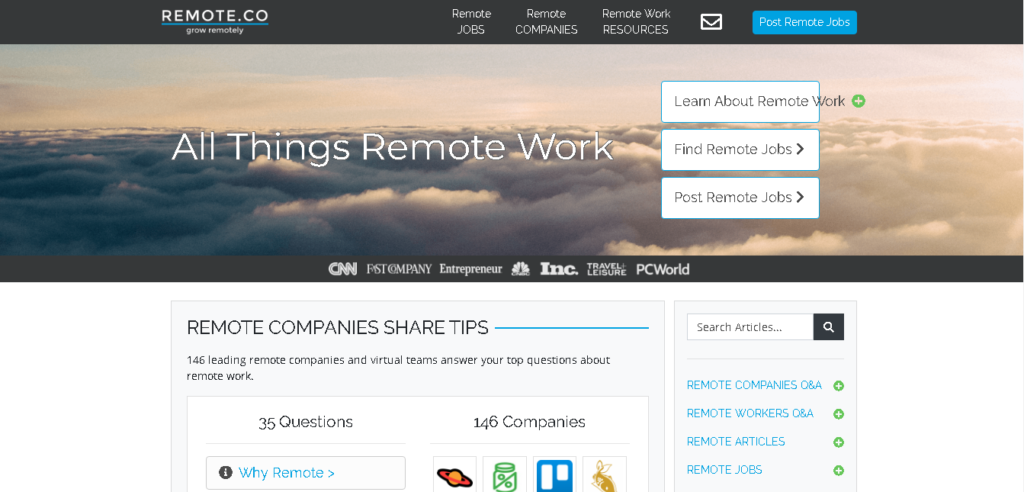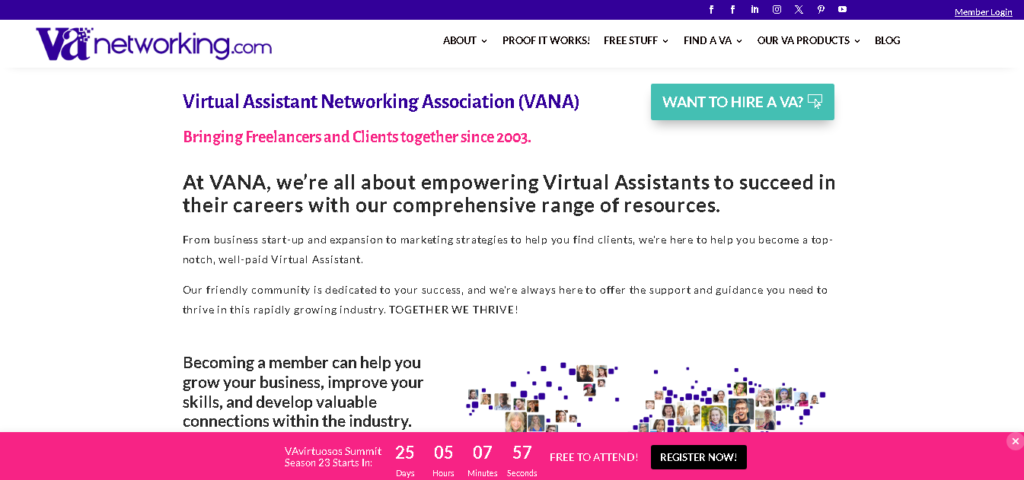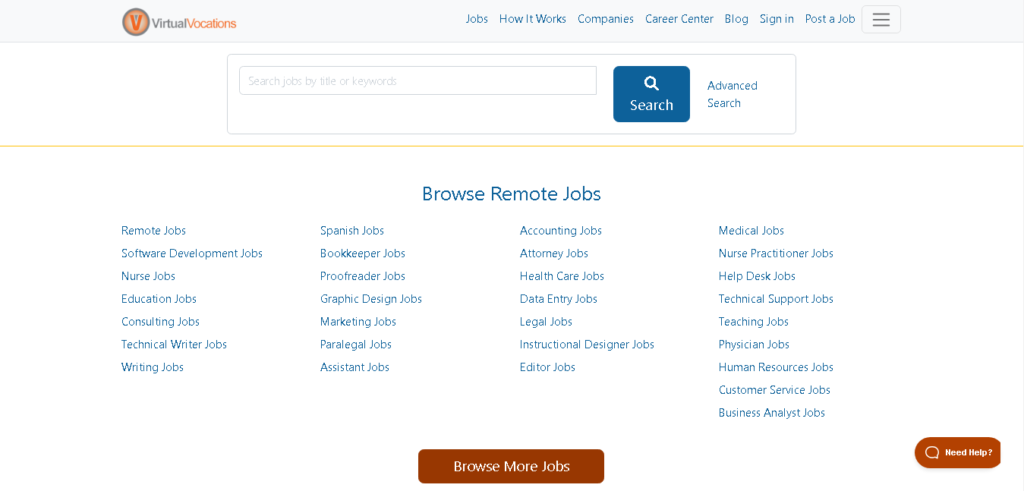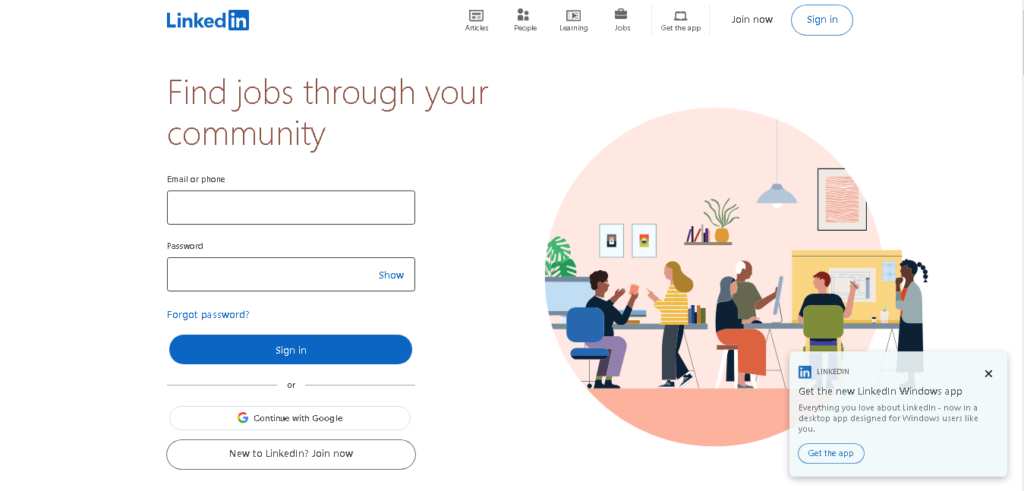If you’ve ever dreamed of earning a stable income while enjoying the freedom to work from anywhere, virtual assistant jobs might be your ideal starting point. These roles allow you to contribute meaningfully to businesses around the world—without ever leaving your home office. Whether you’re a recent graduate, a stay-at-home parent, or simply seeking a flexible work environment, virtual assistant positions offer beginner-friendly entry points into the world of remote work.
When I first transitioned into the remote work space in 2019, I had no prior experience in administrative support. I was juggling part-time roles and unsure of how to begin freelancing. But when I landed my first gig as a virtual assistant to support a marketing consultant, it changed everything. That role taught me essential skills—calendar management, clear communication, and CRM navigation—that I still use today as a digital entrepreneur.
With over 5 years of experience helping others enter the virtual work space, I’ve mentored dozens of aspiring assistants in Kenya and beyond, helping them navigate platforms like Upwork, OnlineJobs.ph, and Fiverr. My goal with this guide is to provide not only practical insight but also the kind of nuanced, real-world perspective that beginners truly need.
Key Takeaways
- Virtual assistant jobs are among the most accessible remote job types for beginners.
- Roles can include calendar management, data entry, CRM updates, content creation, scheduling meetings, and more.
- You don’t need a degree—just the right communication skills, reliability, and a self-motivated attitude.
- Many virtual assistant jobs are part-time, and you can even start with a single client before scaling.
- According to Statista, the global virtual assistant market is expected to grow at a CAGR of over 30% by 2028, signaling long-term demand for VAs.
- Sites like OnlineJobs.ph, Belay, Zirtual, and Fiverr add jobs daily for beginner and intermediate-level assistants.
Industry Insight
A 2024 report by Upwork revealed that 41% of U.S. businesses now outsource admin tasks to freelance virtual assistants, citing benefits like cost savings and 24/7 availability across time zones. Similarly, data from Remote.co shows that roles such as administrative assistant, executive assistant, and virtual assistant rank in the top 10 fastest-growing remote job categories globally.
This shift has created a golden opportunity—especially for beginners—looking to enter the remote job market, whether you’re based in the U.S., Philippines, Kenya, or anywhere else.
What is a Virtual Assistant?
A virtual assistant (VA) provides administrative, technical, or creative support to clients remotely. As a VA, you act as an independent contractor working from your own home office. Clients may be individuals or companies of all sizes and industries. Common virtual assistant duties include scheduling calls and meetings, managing email, writing and designing content, handling social media, data entry, customer service, and more.
The main benefits of working as a virtual assistant include having a flexible schedule, choosing your own clients, working from anywhere, and earning a good hourly rate. It’s an amazing remote job option for those seeking autonomy, work-life balance, and steady income.
Why Become a Virtual Assistant?
Now is an excellent time to start a virtual assisting career. The COVID-19 pandemic accelerated the trend of remote work. Many businesses plan to keep some or all employees working from home permanently. And solopreneurs and small business owners need virtual support more than ever.
As a beginner VA in 2025, you can capitalize on the growing remote work revolution to build your client base quickly. Some key advantages include:
- Increased demand for virtual assistants as more professionals work remotely
- Lower barriers to entry with minimal experience required
- Ability to set your own hours and schedule
- Higher pay rates as VAs become more specialized
- Improved technology and tools for online collaboration
- Greater need for virtual assistants across more industries
The virtual assisting field is expected to grow faster than average over the next decade. So get a head start in 2025 to set yourself up for success.
What Does a Virtual Assistant Do?
At its core, a virtual assistant (VA) provides remote administrative support to businesses, entrepreneurs, or executives. This can range from calendar and email management to data entry, travel arrangements, and even content creation. While many assume a VA only answers emails, the reality is far more dynamic—especially in today’s fast-paced digital ecosystem.
In my early days, I was hired by a U.K.-based executive assistant agency. My tasks included organizing documents, managing team calendars, coordinating internal communication, and updating CRM systems weekly. The exposure helped me build confidence and skills in managing multiple stakeholders internally and externally.
Most beginner jobs focus on these core areas:
- Inbox and calendar management
- Travel booking and event scheduling
- Simple bookkeeping and invoice tracking
- Customer service and online chat support
- Social media scheduling
- Research and spreadsheet creation
- CRM updates and contact management
Virtual Assistant Jobs for Beginners
The great news is you absolutely can land clients and succeed as a VA, even with no prior experience. When just starting out, look for entry-level virtual assistant jobs ideal for beginners, such as:
- Administrative tasks: Calendar management, email, meeting coordination, travel planning, data entry.
- Customer service: Answering customer emails and calls, managing requests and issues.
- Social media: Creating and scheduling social posts, monitoring accounts and engagement.
- Lead generation: Researching sales prospects, compiling lead lists.
- Appointment setting: Scheduling sales calls and meetings.
- Writing and content: Transcribing, proofreading, editing, formatting, blog posts.
- Graphic design: Creating graphics, presentations, infographics, visual assets.
No special degree is required. More important are your skills and eagerness to learn. Build up expertise in any of the above areas to make yourself marketable.
Types of Virtual Assistant Jobs for Beginners (With Examples)
1. Administrative Assistant
This is one of the most common beginner roles. Tasks include organizing schedules, maintaining files, sending emails, and coordinating meetings. You’ll often need basic tools like MS Office or Google Workspace and strong communication skills.
Example: A small law firm in Canada might hire a remote administrative assistant to manage appointments, handle invoicing, and follow up with clients.
Platforms hiring for this role: Upwork, Belay, Freelancer
2. Executive Assistant
While traditionally reserved for experienced professionals, many startups now hire virtual executive assistants on a part-time or freelance basis. These roles usually involve more responsibility, like making travel arrangements, handling confidential files, and offering executive support.
Case Insight: A startup founder I worked with needed an assistant to join his team and oversee his calendar, prepare financial statements, and handle recruitment onboarding.
Ideal skills: Time management, excellent English communication skills, and discretion
Platforms: Athena, Zirtual, Remote.co
3. Marketing Assistant
If you enjoy social media, content, and organization, this is a strong fit. You might assist a marketing team by scheduling posts, organizing assets, or doing basic digital marketing tasks like uploading blog posts or tracking analytics in CRM systems.
Personal Note: I once supported a real estate company’s marketing department, where I helped them launch Instagram campaigns, tracked leads in spreadsheet formats, and wrote captions weekly.
Tools: Canva, Buffer, Google Docs, Trello
Platforms: OnlineJobs.ph, PeoplePerHour, Fiverr
4. Data Entry & Research
One of the easiest entry points. You’ll input information, update records, or collect data for reports. While repetitive, this is often a great place to build relevant experience in systems like Excel or Google Sheets.
Beginner Tip: This is a great starting point for anyone transitioning to remote work without a background in admin jobs.
Platforms: Microworkers, Amazon MTurk, Clickworker, Upwork
5. E-commerce Virtual Assistant
With platforms like Etsy and Shopify booming, many sellers now hire freelance virtual assistants to handle inventory updates, product listing, customer inquiries, and even booking deliveries.
Success Story: One of my mentees in the Philippines works 20 hours a week assisting three Shopify stores—and earns over $900/month from home.
Tools: Shopify, WooCommerce, Email tools
Platforms: FreeUp, 24Task, OnlineJobs.ph
The demand for virtual assistants (VAs) continues to rise as businesses and entrepreneurs seek cost-effective solutions to manage daily operations. If you’re looking for a remote career with flexibility and growth potential, here are the ten best virtual assistant jobs to start in 2025.
Where to Find Virtual Assistant Jobs For Beginners
Here is a list of platforms where you can find virtual assistant jobs as a beginner.
1. Upwork

Upwork is one of the largest freelance job platforms with opportunities in nearly every industry. They have an extensive virtual assistant job board. You can create a detailed profile and apply to remote gigs from small businesses or individuals worldwide. Upwork has high competition, so focus on small entry-level projects at first.
2. Fiverr

Fiverr is a freelance services marketplace used by over 5 million businesses. Many hire Fiverr virtual assistants to handle tasks like data entry, research, social media, and more. Like Upwork, build up your profile and reviews to land clients. Fiverr is best for fixed price gigs versus hourly work.
3. FlexJobs

FlexJobs specializes in screening and listing work-from-home and flexible job opportunities. Search their site for legitimate virtual assistant and admin jobs from pre-vetted companies. FlexJobs has a paid subscription model but provides much higher quality remote jobs.
4. Remote.co

Remote.co showcases thousands of quality remote jobs from startups and tech companies. They have a “Virtual Assistant” job category you can review. Remote.co lists both full-time and contract virtual assistant roles. Sign up for their mailing list to get remote job alerts.
5. VA Networking

Virtual Assistant Networking Association (VANA) has been bringing freelancers and clients together since 2003. VANA is dedicated to empowering virtual assistants to succeed in their careers by providing a comprehensive range of resources, from business start-up and expansion to marketing strategies to help them find clients. They offer free start-up resources for virtual assistants and freelancers, which can be implemented immediately to help them find more clients and grow their at-home virtual assistant business.
6. Belay

Belay provides dedicated, U.S.-based virtual assistants to clients on an ongoing basis. Join their Workplace Care team to get assigned to long-term accounts with set hours. They handle sales and client management for you.
7. Time Etc

Time Etc maintains a talent pool of virtual assistants to match with clients. You apply to join their team of freelance contractors. They have a good training program and offer benefits. Time Etc provides steady remote VA work.
8. Toptal

Toptal connects expert freelancers with top companies for long-term, remote work. Though highly competitive, it can be a source of high-paying full-time or part-time virtual assistant roles requiring specialized skills.
9. Virtual Vocations

Virtual Vocations lists work-from-home jobs with vetted companies hiring now. Search their database by job title or keyword to find virtual assistant and admin openings from legitimate employers.
10. LinkedIn

Don’t forget to leverage LinkedIn to connect with potential clients directly. You can search for and apply to posted virtual assistant jobs. But also reach out to businesses and individual professionals promoting your services.
How to Get Your First Virtual Assistant Job
Follow this step-by-step process to land your first job and get paid for work as a virtual assistant:
Step 1: Choose Your Niche
What types of administrative or creative tasks do you want to specialize in as a VA? Select 1-2 core services to offer based on your natural strengths, interests, and experience.
Common virtual assistant niches include social media, email management, writing, web research, graphic design, bookkeeping, and more. Position yourself as an expert in your chosen niche(s) when applying for jobs.
Step 2: Build Your Profile and Portfolio
Create accounts on popular freelance platforms like Upwork and Fiverr. Complete your profile fully with skills, credentials, education, past experience, portfolio samples, etc.
Also develop your own professional website, LinkedIn profile, and business cards. Provide plenty of content showcasing your abilities.
Step 3: Apply to Virtual Assistant Job Listings
Search for entry-level remote gigs on freelance sites, virtual assistant job boards, and company career pages. Focus on basic administrative, customer service, or creative jobs requiring minimal experience.
Follow all instructions closely when submitting proposals. Emphasize your relevant skills, passion for the role, and ability to deliver excellent results.
Step 4: Develop Trust with Your First Client
If selected for a project, communicate professionally and aim to exceed expectations. Ask clarifying questions, send progress updates, and deliver on time. This helps build a reputation for reliability.
Go above and beyond on your first VA jobs to get positive reviews. This will make it easier to land more clients.
Step 5: Request More Work and Referrals
Once you successfully complete initial assignments, kindly ask about any additional work or referrals. Aim to build an ongoing relationship versus a one-off gig.
Highlight your interest in supporting them long-term as a dedicated virtual assistant. If the fit is good, this can lead to a steady stream of assignments.
Step 6: Continue Expanding Your Client Base
Keep networking and applying for virtual assistant jobs nonstop, even once you have a couple of regular clients. Avoid relying on just one or two sources of income.
Over time, raise your rates and transition to handling more complex work for larger enterprises. This will maximize your income potential as an experienced VA.
Skills Needed to Become a Successful Virtual Assistant
While anyone can become a VA, certain soft and hard skills will help you excel. Develop these high-demand abilities to get hired and satisfy clients:
Communication: From email and chat to phone and video calls, you must communicate clearly while building rapport with professionals from diverse backgrounds.
Time management: Juggling multiple clients and projects requires stellar organization. Meet deadlines, prioritize tasks, and schedule your time wisely.
Tech savvy: Master popular remote work tools like Asana, Trello, Slack, Google Workspace, Zoom, etc. Be a quick learner when adopting new software needed for the job.
Writing/content skills: Many administrative or creative gigs require strong writing ability. Bring a professional, error-free writing style.
Research skills: Retrieve information needed to complete projects accurately and efficiently. Verify facts using credible sources.
Multitasking: The best VAs toggle between tasks for multiple clients with ease. Stay focused and detail-oriented.
Proactive mindset: Don’t just wait for instructions. Offer suggestions and ask how you can provide further assistance.
Problem-solving: When issues inevitably arise, remain calm. Assess the situation and present solutions.
Flexibility: Adapt gracefully to changing priorities and client needs. Roll with the punches.
Tools Every Beginner Virtual Assistant Should Know
Here are tools I used in my first year as a VA and still recommend:
- Google Workspace – for Docs, Sheets, and team collaboration
- Trello or Asana – project management
- Zoom/Google Meet – virtual meetings
- CRM software – like HubSpot or Zoho
- Calendly – for scheduling meetings
- Slack – internal team messaging
Familiarity with these shows proficiency in Google tools and digital collaboration—both highly valued by clients.b
How Much Can Beginners Earn as Virtual Assistants?
Depending on your skill level, location, and work schedule, beginner virtual assistants earn between $5 to $20/hour. Clients from the U.S., Canada, and Australia often prefer hiring remotely from countries like the Philippines, Kenya, or India due to timezone flexibility and cost-efficiency.
Real-World Example: I began charging $6/hour as a part-time VA in 2019. Within 6 months, I had raised my rate to $12/hour after gaining more work experience and testimonials.
How to Build a Strong Virtual Assistant Profile
To land your first client, you need a strong profile—especially if you’re using platforms like Fiverr or Upwork.
Checklist:
- Include a clear, professional photo
- Write a persuasive job description (highlight your strengths)
- List relevant experience (volunteer work counts!)
- Emphasize tools you’ve used (e.g., MS Office, CRM, Google Docs)
- Mention your home office setup (quiet space, reliable internet)
Addressing Common Concerns for New Virtual Assistants
“I Don’t Have Any Experience—Will Anyone Hire Me?”
This is by far the most common concern. The good news? Many businesses hiring virtual assistants are more interested in communication skills, reliability, and self-motivated traits than formal degrees or extensive resumes. When I started, I had zero paid experience. I used examples from volunteering, helping a family business, and even organizing school events to showcase my ability to stay organized, manage a calendar, and complete tasks independently.
Action Step: Build a simple portfolio by offering to assist one or two small businesses or solopreneurs for free or at a discounted rate. This builds relevant experience and client testimonials you can use to land paying jobs.
“Can I Really Make a Living from Virtual Assistant Jobs?”
Absolutely—but it requires focus and consistency. A beginner may start with a part-time role or a single client, then grow into full-time or multi-client contracts. A colleague of mine in South Africa began with one remote job earning $8/hour. Within 18 months, she had transitioned into a full-time executive assistant role working 40 hours per week for an Australian tech firm.
Pro Tip: Choose a niche early—like digital marketing, real estate, or tech—and become an expert VA in that space. This positions you for premium roles.
Actionable Tips to Launch Your Virtual Assistant Career
1. Build a Dedicated Workspace
Having a distraction-free home office is key for productivity and professionalism. Ensure:
- A quiet, clean background for video calls
- Ergonomic desk setup
- Reliable internet connection
- Backup tools like power banks or mobile data
2. Master Essential Tools
Clients expect a VA to be tech-savvy. Here’s what to learn in your first month:
| Tool | Use Case |
|---|---|
| Trello/Asana | Task and project tracking |
| Google Calendar | Team calendars and scheduling |
| Slack | Internal communication |
| HubSpot CRM | Managing leads, contacts |
| Wave/QuickBooks | Invoice and bookkeeping |
Learning Tip: Take free online courses on YouTube, Coursera, or HubSpot Academy to gain quick proficiency.
3. Optimize Your Freelance Profiles
On platforms like Fiverr and Upwork, your profile is your storefront. Use SEO-rich titles such as:
- “Reliable Executive Virtual Assistant for Administrative Support and Calendar Management”
- “Detail-Oriented VA – CRM, Research, and Scheduling Meetings Support”
Also, be sure to list your time zone, available hours, tools you’re proficient in, and niche expertise.
Advanced Insight – Matching Your Skills With Client Needs
Think like a business owner: What do they truly want from an assistant?
They’re not just hiring someone to manage their inbox—they want someone who can help them run a business, reduce stress, and improve operations.
Here’s how to align your offerings:
| Client Concern | VA Solution |
|---|---|
| Missed deadlines | Provide time management support and reminders |
| Chaotic schedule | Offer proactive calendar organization |
| Growing customer base | Manage CRM and email follow-ups |
| Poor documentation | Organize documents, maintain databases |
| Hiring new team members | Assist with recruitment and onboarding |
Industry Note: As of 2025, over 70% of startups with fewer than 10 employees outsource some kind of admin work—this means admin jobs are in increasing demand globally, especially for those offering a flexible schedule and diverse digital skills.
Final Thought
Having worked in online spaces for over 6 years, including managing remote teams and hiring multiple virtual assistants, I’ve witnessed firsthand how transformative this role can be. I’ve seen beginner VAs—armed with just grit, strong communication, and a laptop—turn their lives around with steady remote work.
The world of virtual assistant jobs is rapidly evolving. New roles are created monthly, jobs are added daily, and businesses are increasingly relying on freelance and admin support. Your opportunity is not coming—it’s already here.
Don’t wait to feel “ready.” Start with what you know. Build from there. One small task done well can lead to recurring clients, glowing testimonials, and eventually, the freedom to choose who you work with and how much you earn.
Related Articles:
- The Top 10 Best Fiverr Gigs for Students to Make Money Online in 2023
- Fiverr Affiliate Program Review: How to Make Money Promoting Fiverr Services
- The Best Affiliate Programs on Impact Radius In 2023
- How To Make Money On Fiverr
Frequently Asked questions
Q: What are the best virtual assistant jobs for beginners?
A: The best virtual assistant jobs for beginners in 2025 can include tasks such as data entry, social media management, email management, scheduling appointments, and general administrative tasks.
Q: Where can I find virtual assistant jobs?
A: You can find virtual assistant jobs on job boards such as Upwork, Freelancer, and Indeed. Additionally, you can reach out to virtual assistant companies or search for virtual assistant positions directly on company websites.
Q: Can I become a virtual assistant with no experience?
A: Yes, you can become a virtual assistant with no experience. Many virtual assistant jobs are suitable for beginners and offer on-the-job training. It’s important to highlight your skills, willingness to learn, and attention to detail when applying for virtual assistant positions.
Q: How can I start a virtual assistant business?
A: To start a virtual assistant business, you need to determine your target market, set your pricing and services, establish an online presence, network with potential clients, and create a system to manage your tasks and communications effectively.
Q: Can I work remotely as a virtual assistant?
A: Yes, working remotely as a virtual assistant is common. Most virtual assistant jobs allow you to work from home or any location with an internet connection. However, it’s important to ensure you have a reliable internet connection and a dedicated workspace.
Q: What are the best virtual assistant jobs that can be done from home?
A: The best virtual assistant jobs that can be done from home include tasks such as managing social media accounts, responding to emails, creating content, conducting online research, scheduling appointments, and providing customer support.
Q: How can I find virtual assistant positions?
A: You can find virtual assistant positions by searching on job boards like Upwork, Freelancer, and Indeed. You can also reach out to virtual assistant companies, network with professionals in the field, and search for remote job opportunities on company websites.
Q: What qualifications do I need to work as a virtual assistant?
A: The qualifications needed to work as a virtual assistant can vary depending on the specific job requirements. However, having good communication skills, strong attention to detail, proficiency in basic computer applications, and the ability to multitask effectively are generally important qualities for a virtual assistant.
Q: How much money can I make as a virtual assistant?
A: The amount of money you can make as a virtual assistant varies depending on factors such as your experience, skills, the tasks you perform, and your clients. Virtual assistants can earn anywhere from $15 to $50 or more per hour, depending on these factors.
Q: Are there virtual assistant job boards I can use to find opportunities?
A: Yes, there are online job boards specifically dedicated to virtual assistant jobs. Some popular virtual assistant job boards include Upwork, Freelancer, Remote.co, and Virtual Assistant Jobs. These platforms list various virtual assistant job opportunities from different industries and companies.




